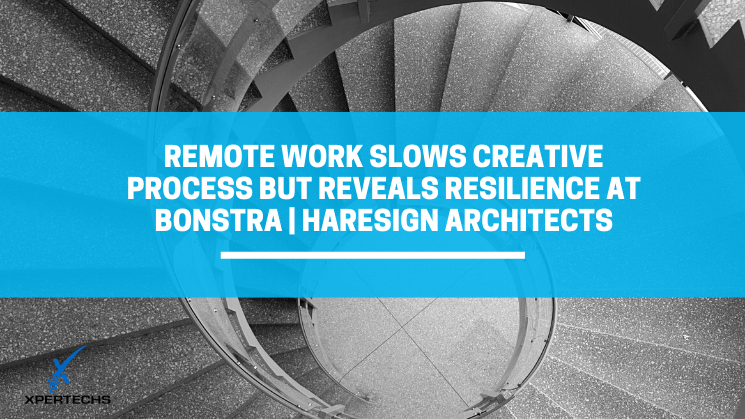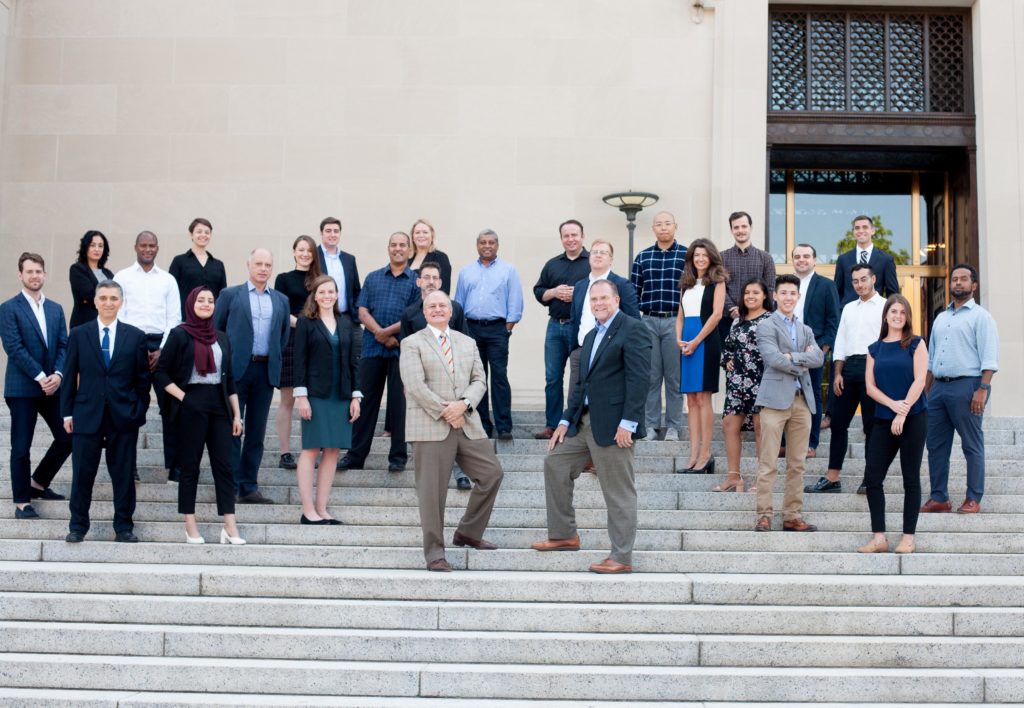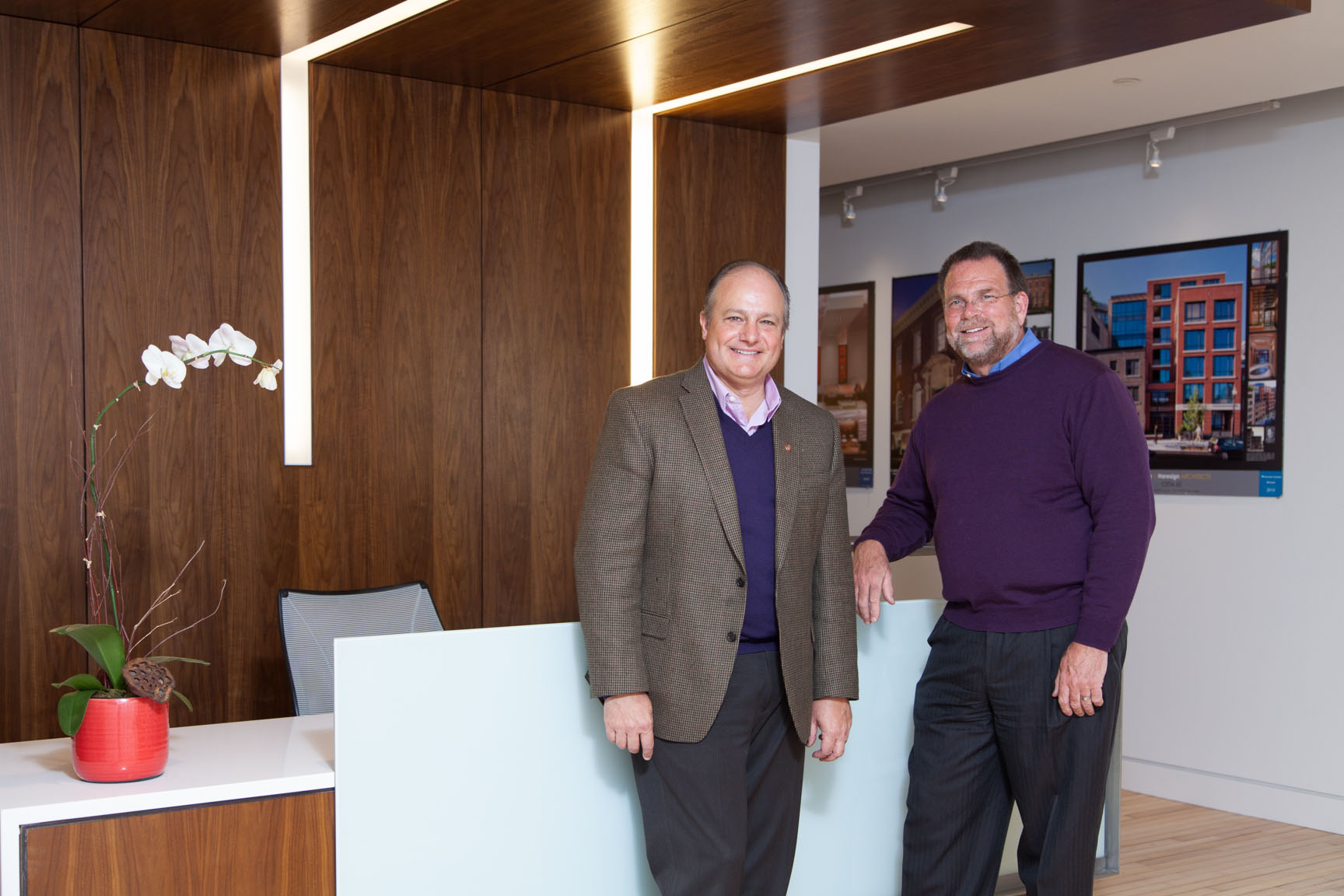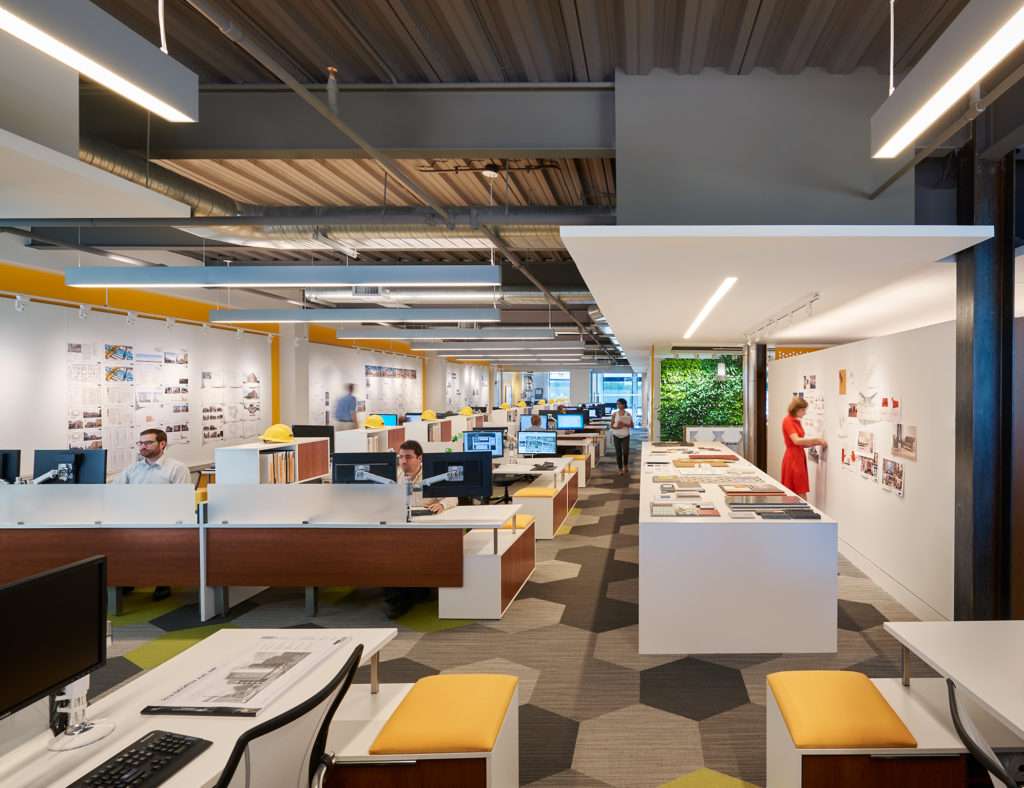Remote Work Slows Creative Process But Reveals Resilience at Bonstra | Haresign ARCHITECTS

You can’t blame the people at Bonstra | Haresign ARCHITECTS if they feel a little out of sorts as they work from their individual remote locations during the COVID-19 public health crisis. After all, the work they do in architectural design is all about creating physical spaces that not only set the stage for daily life, they stimulate the kind of human interactions that build community.
The company has compensated for their inability to have face to face interactions by increasing the intensity of their communications both internally and externally. While they have successfully sustained operations, they miss the spark that comes from spontaneity in their creative process. When staff are working in the office, people naturally gather around the common area table, or someone’s desk to have discussions that lead thinking in new directions.
“I believe that we gather energy from each other,” explained David Haresign, FAIA, Partner in the firm based in downtown Washington DC. “There’s a creative energy, a force field that happens when teams get together and work things out. Teams juice each other, and people play off of each other while ideation occurs around iterative review and the design process evolves; team members draw energy from each other in the creative process.”

The team at Bonstra | Haresign ARCHITECTS prior to their remote work transition. Photo credit: Latosha Francis, The Captured Life
Technology-Enabled Communications and Operations
While continuing to work during DC’s shelter-in-place order, the firm has conducted many virtual meetings and public presentations. They’ve increased their internal meetings for their staff of 32 people, using Microsoft Teams to help coworkers feel like they’re connected to each other. Virtual happy hours keep interactions from becoming totally transactional and help to sustain rapport in their relationships.
All of this is possible with technology and a transition from the office to remote work that occurred with minimal downtime. Thanks to their decision to outsource IT support to XPERTECHS starting March 1st, several initiatives were already in place that gave the company a jumpstart on setting up employees to work from home.
Hardware and software updates, including new servers, were already in motion. VPN upgrades to provide a secure pipeline for accessing software and files was next in line. Scaling VPN access was critical to enabling the flow of information between staff, clients, and partners as everyone started to work from home.
“I think XPERTECHS has done a great job with us. They have helped us tremendously by guiding us through the transition into this emergency remote work environment that we find ourselves in,” said David Haresign. “We’ve experienced some positive things that have come out of it and we will learn from this experience, applying it to improve future work operations within the firm.”

Bill Bonstra, FAIA, LEED AP and David Haresign, FAIA prior to COVID-19 pandemic. Photo credit: Jim Darling
Perspective About Remote Work is Evolving
Prior to the COVID-19 situation, remote access for Bonstra | Haresign employees was limited to a handful of senior staff who need to stay connected while not in the office. There had been some loose discussions about how remote work could be effective, and even of how some companies use the option of working remotely as a benefit, but discussions didn’t get past the idea stage.
Now with real life remote work experience under their belts, the leadership team’s perspective is evolving and they’re rethinking how they might be able to allow employees to work remotely without sacrificing their creative process. The answer is going to be found in an examination of roles, and what tasks in each role might be done better and faster in quiet, remote locations.
“Anything that is related to project documentation is often a singular task,” said Richard Abendroth AIA, Project Architect. “We’re always to some extent in design mode, but if you can draw a line between design and documentation, that’s a pretty reliable separation between what can be done effectively remotely, and what is a little bit more cumbersome.”

The face to face interactions that happen when people are working together in the Bonstra | Haresign ARCHITECTS office feeds their creative process. Photo credit: Anice Hoachlander/ Hoachlander Davis Photography
Face to Face Interaction Critical for Collaboration
While some semblance of remote work may be in the future for Bonstra | Haresign employees, they envision a hybrid model that can both feed the creative process, and allow for the autonomy that people need to be successful in their individual roles.
“The chance interaction, collaboration, and teaching or knowledge transfer are missing with remote work, and it takes more effort to make that happen,” explained David. “That’s a big miss. We do think that face to face communication and interaction are critical to working in a collaborative, creative environment.”
Having their team dispersed to 32 different locations may have slowed down their creative process, but other qualities of their culture have come to the surface. They’ve discovered just how nimble, flexible, disciplined and understanding they can be. Those are the qualities – along with a firm technology foundation – that you need to be resilient in a crisis like this one.
+++++
Learn more about what it’s like to work with XPERTECHS: Bonstra | Haresign ARCHITECTS Switched to XPERTECHS Just in Time for the Remote Work Exodus
About Bonstra | Haresign ARCHITECTS
Bonstra | Haresign ARCHITECTS is a full-service architectural design studio founded in 2000 in the heart of Washington, DC. We are a firm of 30 highly qualified creative architects and designers – problem-solvers who thrive on finding innovative solutions to the challenges of cities and neighborhoods. Our team works on a variety of projects ranging in size and complexity from residential renovations and adaptive use to large-scale, commercial and mixed-use developments. We operate in a collegial studio environment where each team member participates in all aspects of project design, development and execution. Our projects succeed based on our ability to listen to our clients, to communicate effectively with each member of our team and to maintain a balance between a view of the larger picture and a precise focus on the details. We believe that architecture should be expressive of its time, fulfill client and community aspirations, respond appropriately to its physical context, and inspire the public with memorable and creative placemaking, buildings and spaces. www.bonstra.com